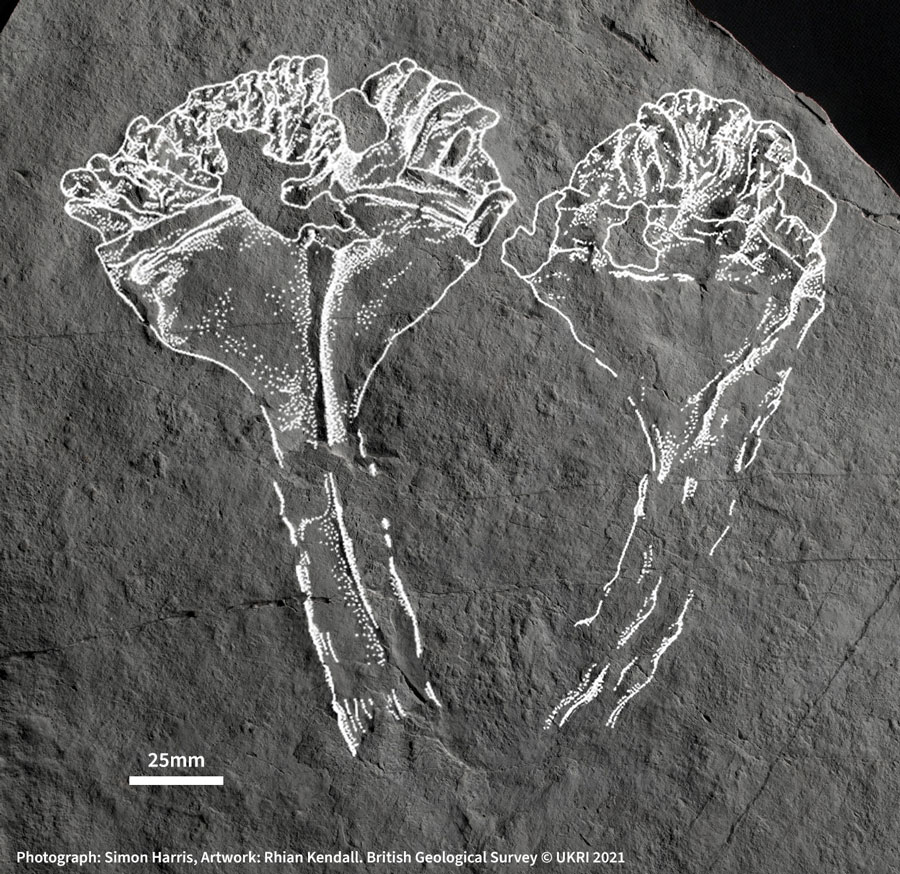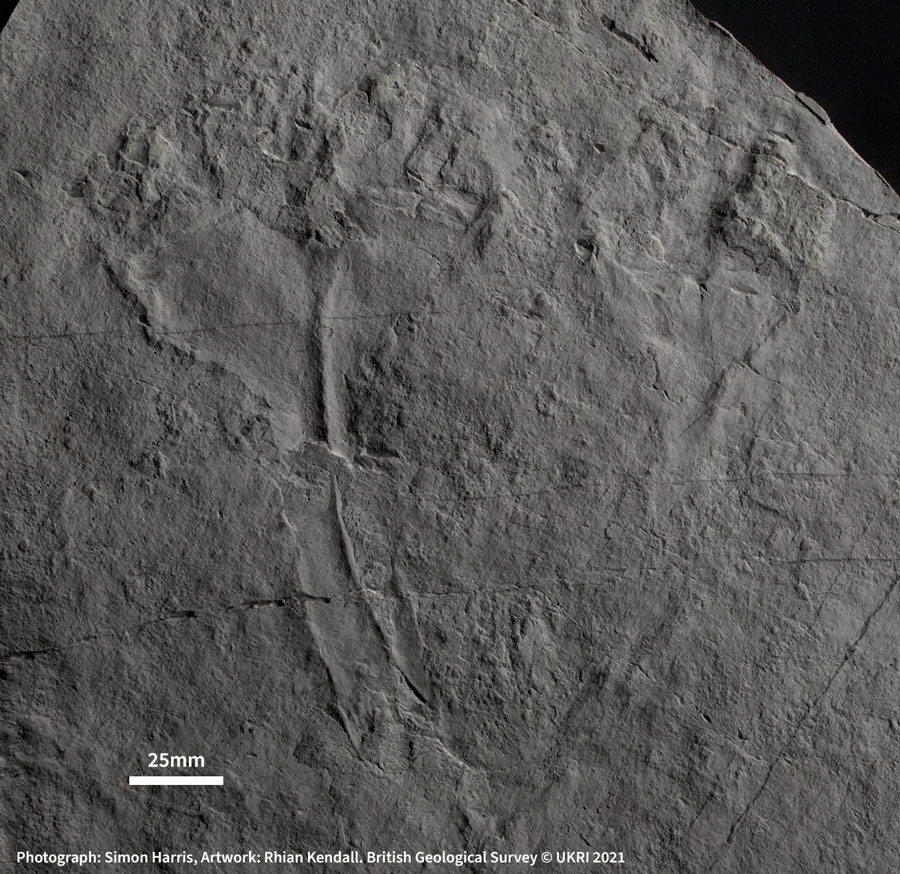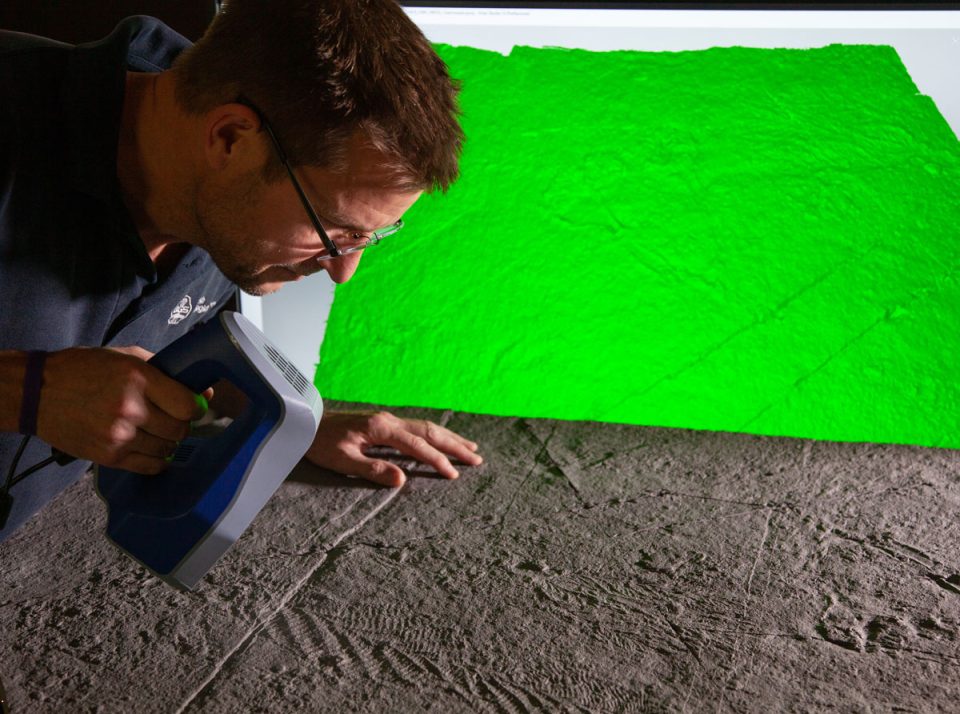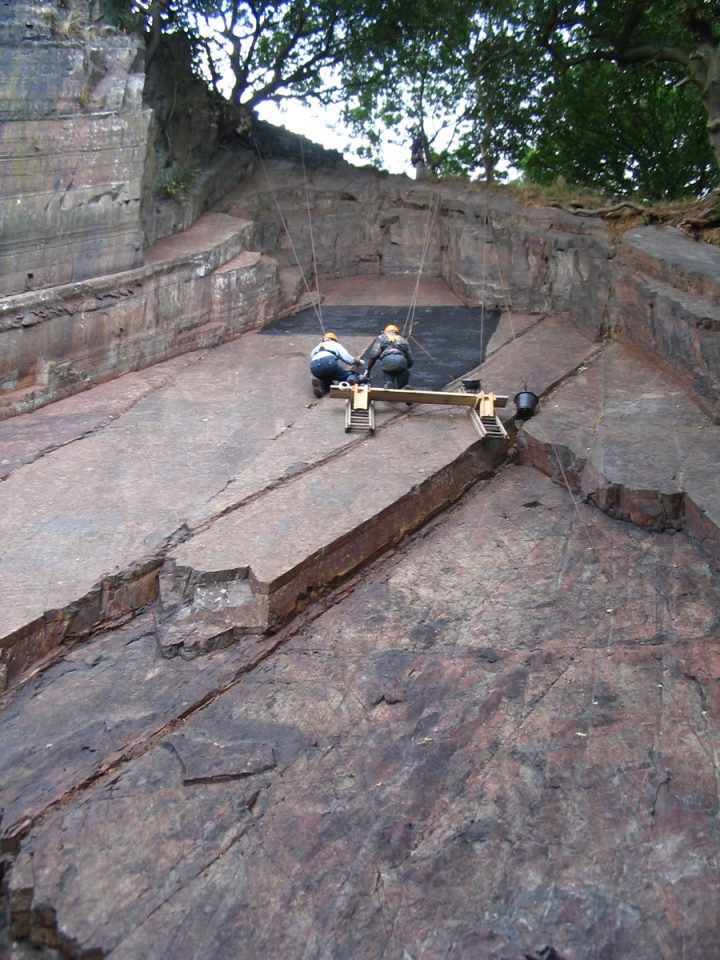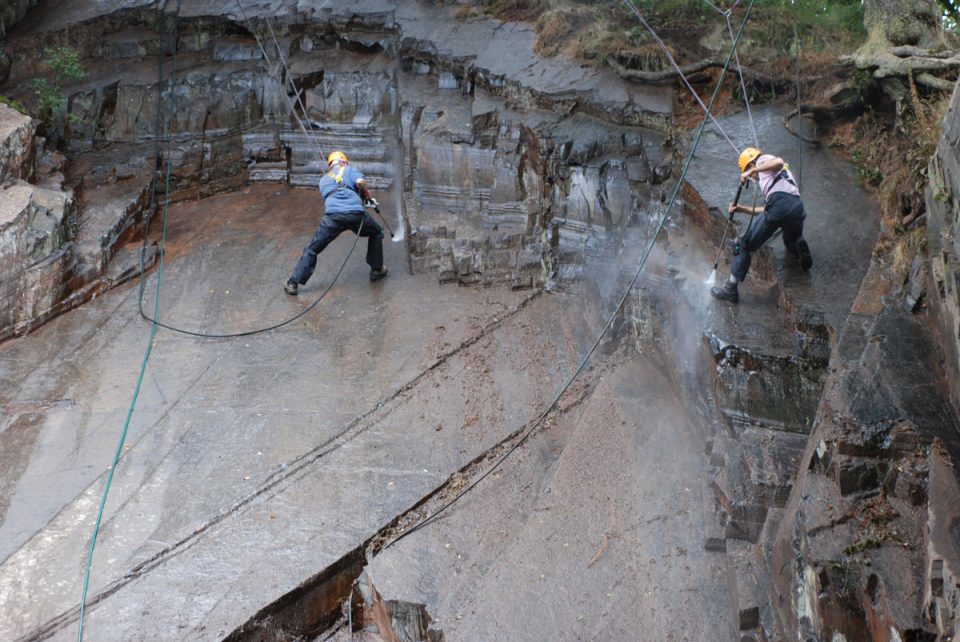560-million-year-old fossil is first animal predator
The specimen is the first of its kind to be found and is related to the group that includes modern corals, jellyfish and anemones.
25/07/2022 By BGS Press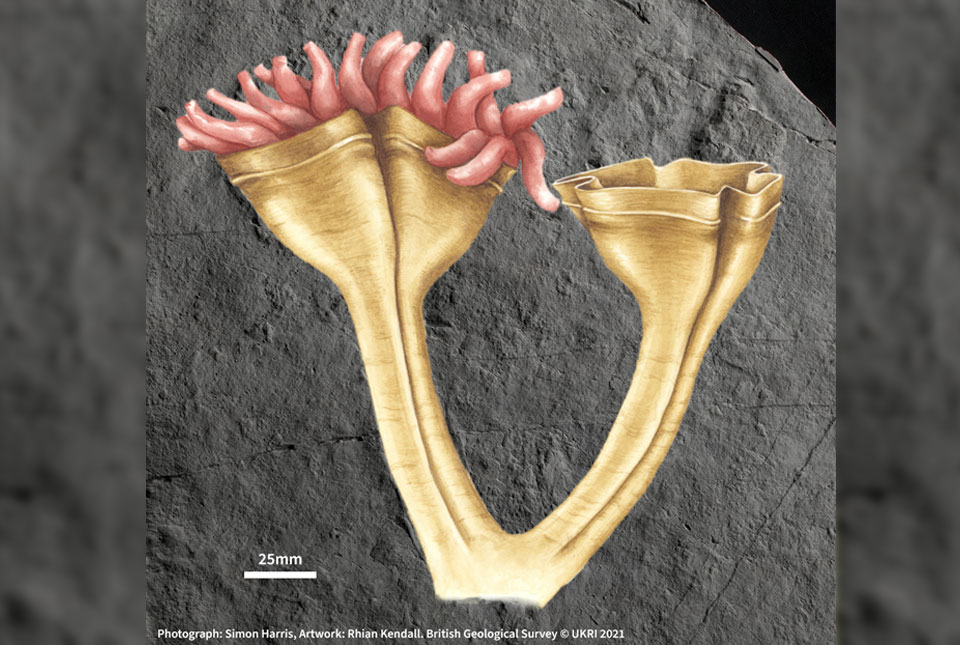
Geologists have found the fossil of the earliest known animal predator. The 560-million-year-old specimen is the first of its kind, but it is related to the group that includes corals, jellyfish and anemones living on the planet today.
The palaeontologists who discovered it have named it ‘Auroralumina attenboroughii‘ in honour of Sir David Attenborough. The first part of its name is Latin for ‘dawn lantern’, in recognition of its great age and resemblance to a burning torch.
It was found in Charnwood Forest, near Leicester in England, which is famous for its fossils. In 1957, a fern-like impression in stone turned out to be one of the oldest fossilised animals, Charnia masoni.
Sir David Attenborough ‘truly delighted’ with his new namesake
When I was at school in Leicester I was an ardent fossil hunter. The rocks in which Auroralumina has now been discovered were then considered to be so ancient that they dated from long before life began on the planet. So I never looked for fossils there.
A few years later a boy from my school found one and proved the experts wrong. He was rewarded by his name being given to his discovery. Now I have — almost — caught up with him and I am truly delighted.
Sir David Attenborough.
Sir David is referring to Roger Mason, after whom Charnia masoni was named.
When did modern groups appear?
The discovery of Auroralumina, reported in Nature Ecology and Evolution, throws into question when modern groups of animals appeared on Earth. Dr Phil Wilby, palaeontology lead at BGS, is one of the scientists who made the find.
It’s generally held that modern animal groups like jellyfish appeared 540 million years ago, in the Cambrian Explosion, but this predator predates that by 20 million years.
It’s the earliest creature we know of to have a skeleton. So far we’ve only found one, but it’s massively exciting to know there must be others out there, holding the key to when complex life began on Earth.
Dr Phil Wilby, BGS Palaeontology Lead.
When and where was it found?
Palaeontologists still flock to the forest to examine its Ediacaran Period fossils, aged between 635 and 538.8 million years. In 2007, Phil Wilby and others from BGS spent over a week cleaning a 100 m-square rock surface with toothbrushes and pressure jets. They took a rubber mould of the whole surface and captured the impression of over 1000 fossils — and one stood out from the crowd.
Dr Frankie Dunn from the Oxford University Museum of Natural History carried out the detailed study.
This is very different to the other fossils in Charnwood Forest and around the world.
Most other fossils from this time have extinct body plans and it’s not clear how they are related to living animals. This one clearly has a skeleton, with densely packed tentacles that would have waved around in the water capturing passing food, much like corals and sea anemones do today.
It’s nothing like anything else we’ve found in the fossil record at the time.
Dr Frankie Dunn, Oxford University Museum of Natural History.
Dunn calls the specimen a ‘lonely little fossil’ and thinks it originated from shallower water than the rest of the fossils found in Charnwood.
The ancient rocks in Charnwood closely resemble ones deposited in the deep ocean on the flanks of volcanic islands, much like at the base of Montserrat in the Caribbean today.
All of the fossils on the cleaned rock surface were anchored to the sea floor and were knocked over in the same direction by a deluge of volcanic ash sweeping down the submerged foot of the volcano, except one: A. attenboroughii.
It lies at an odd angle and has lost its base, so appears to have been swept down the slope in the deluge.
Dr Frankie Dunn.
A. attenboroughii was dated at BGS’s headquarters in Keyworth, Nottingham, using zircons in the surrounding rock. Zircon is a tiny radioactive mineral that acts as a geological clock: it assesses how much uranium and lead are present. From that, geologists can determine precisely how old the rock is.
The ‘Cambrian Explosion’ was remarkable. It’s known as the time when the anatomy of living animal groups was fixed for the next half a billion years.
Our discovery shows that the body plan of the cnidarians [corals; jellyfish; sea anemones, etc.] was fixed at least 20 million years before this, so it’s hugely exciting and raises many more questions.
Dr Frankie Dunn.
Media contact: Sarah McDaid (sarah@mcdaidpr.co.uk/ 07866789688)
The new fossil’s name
The new fossil’s full name is Auroralumina attenboroughii.
About the Ediacaran Period
The Ediacaran Period immediately precedes the Cambrian Explosion and, for a long time, was thought not to contain fossils, although Darwin surmised that there must be a protracted history to life.
This all changed with the discovery of Charnia masoni and of similar fossils in rocks of the same age elsewhere in the world. Collectively, these strange fossils comprise the Ediacaran biota and include not only creatures that bear no resemblance to any subsequent life, but also the ancestors of modern animals. The planet at that time was a very different place, but these creatures helped shape the modern natural world.
Relative topics
Related news
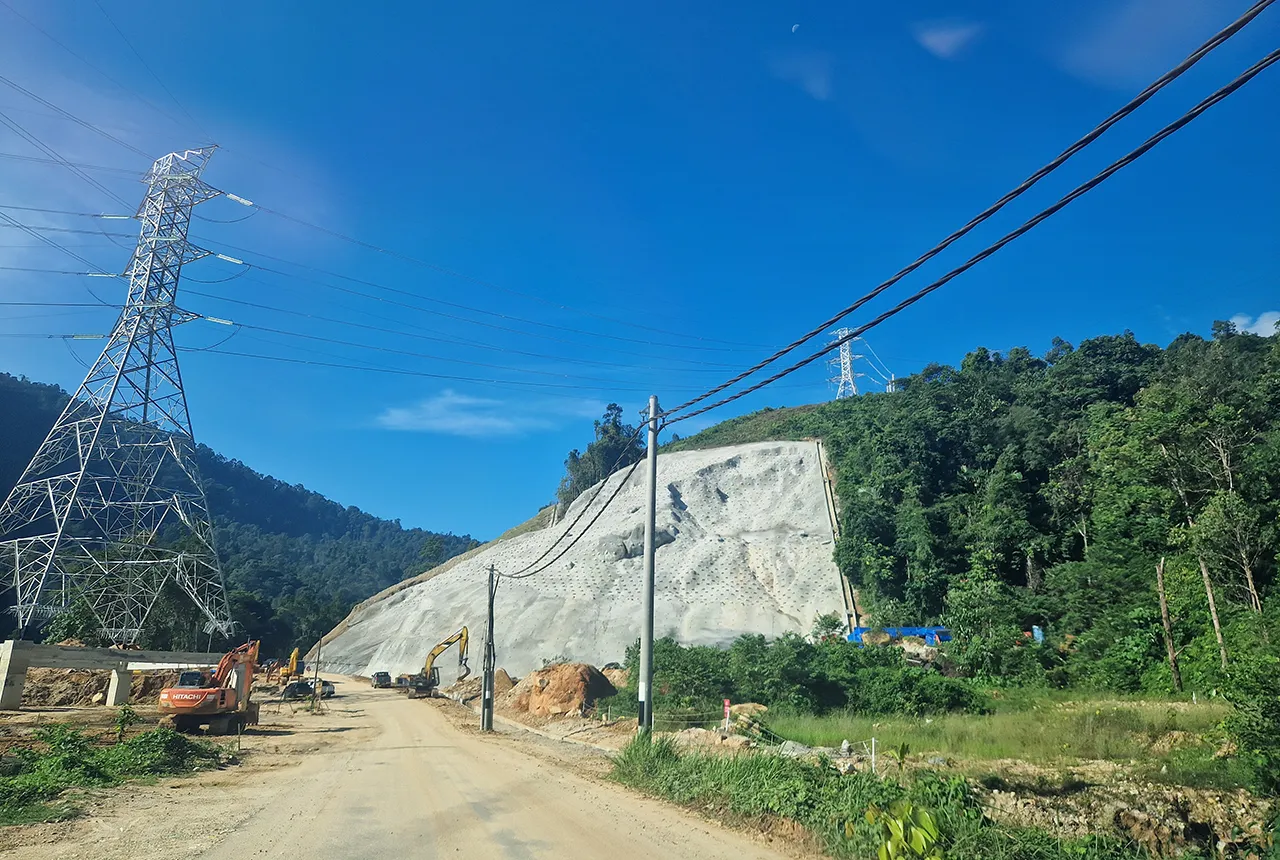
BGS awarded funding to support Malaysia’s climate resilience plan
17/12/2025
The project, funded by the Foreign, Commonwealth & Development Office, will focus on minimising economic and social impacts from rainfall-induced landslides.
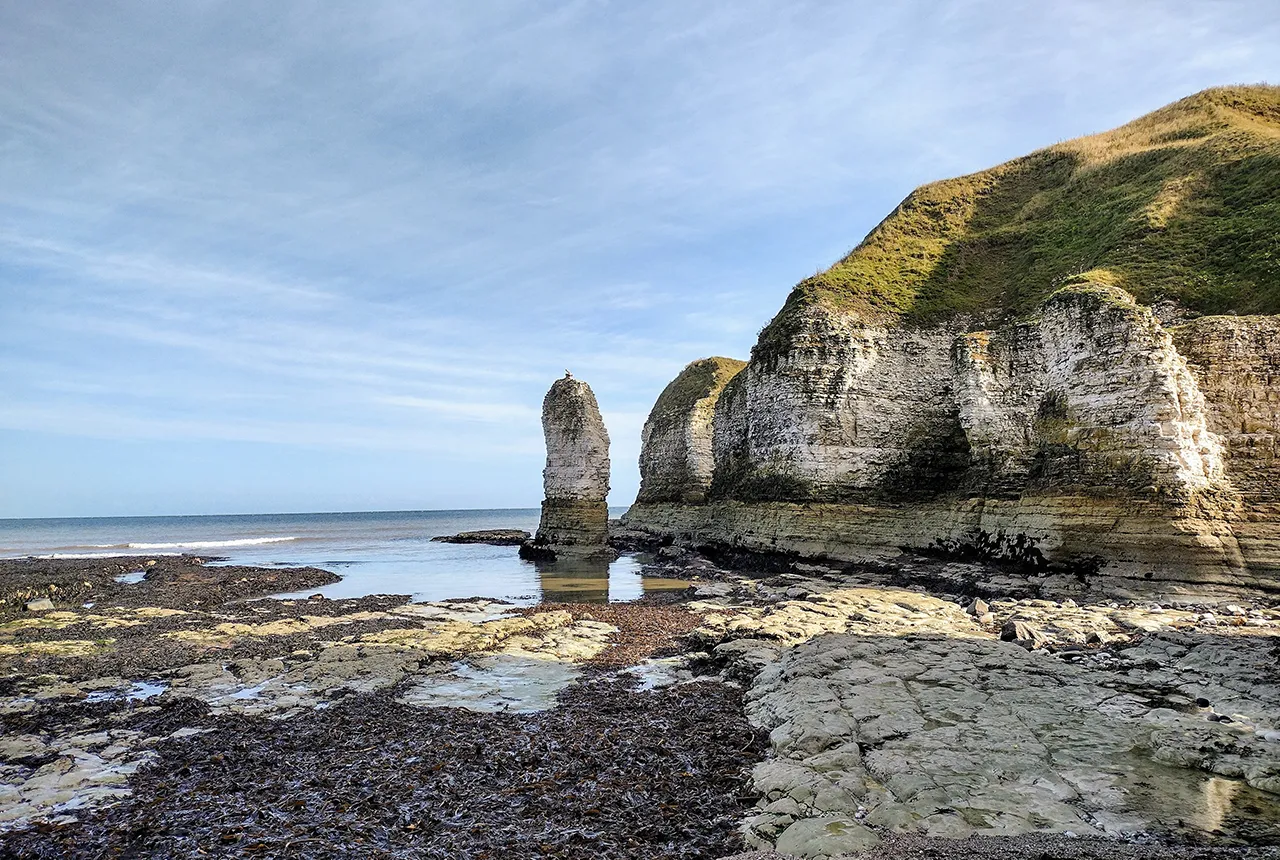
New geological maps of the Yorkshire Wolds to better inform groundwater management and policy decisions
17/12/2025
The new mapping provides crucial data on localised geological issues that may assist in protecting water supplies.
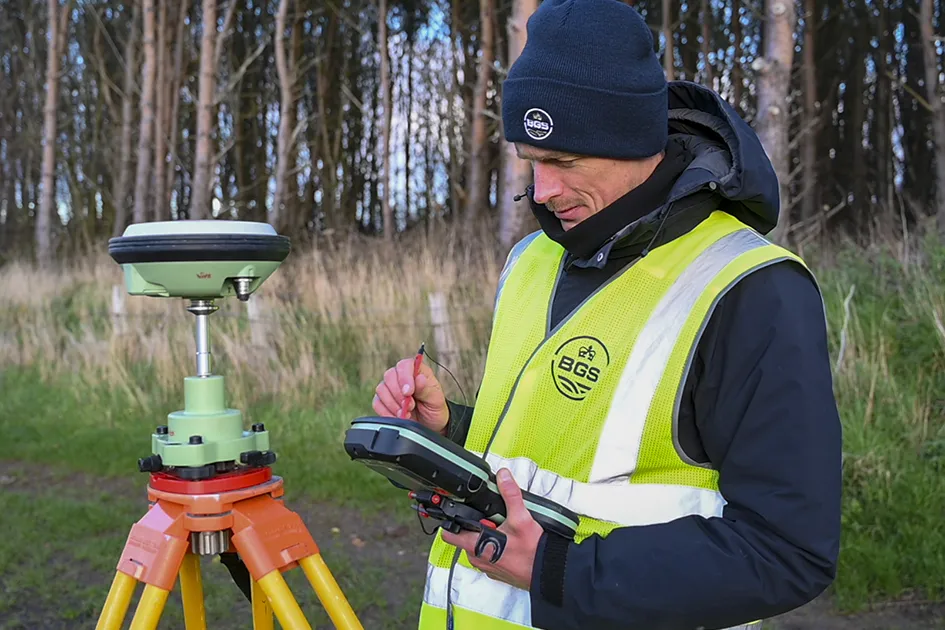
‘Three norths’ set to leave England and not return for hundreds of years
12/12/2025
The historic alignment of true, magnetic, and grid north is set to leave England, three years after they combined in the country for the first time since records began.

BGS agrees to establish collaboration framework with Ukrainian government
11/12/2025
The partnership will focus on joint research and data exchange opportunities with Ukrainian colleagues.
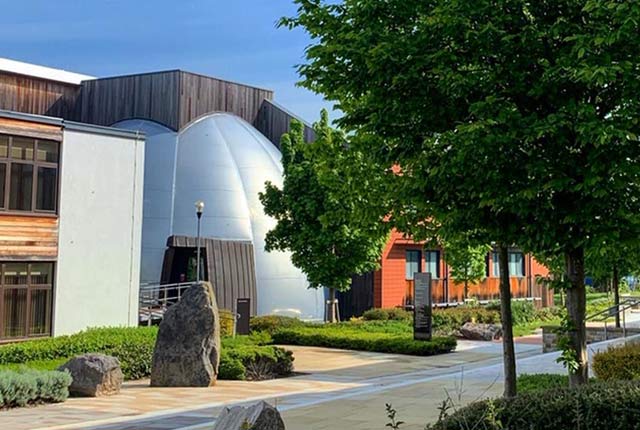
Making research matter: BGS joins leading research organisations in new national initiative
10/12/2025
A new alliance of 35 organisations has been formed that is dedicated to advancing science for the benefit of people, communities, the economy and national priorities.

New 3D model to help mitigate groundwater flooding
08/12/2025
BGS has released a 3D geological model of Gateshead to enhance understanding of groundwater and improve the response to flooding.
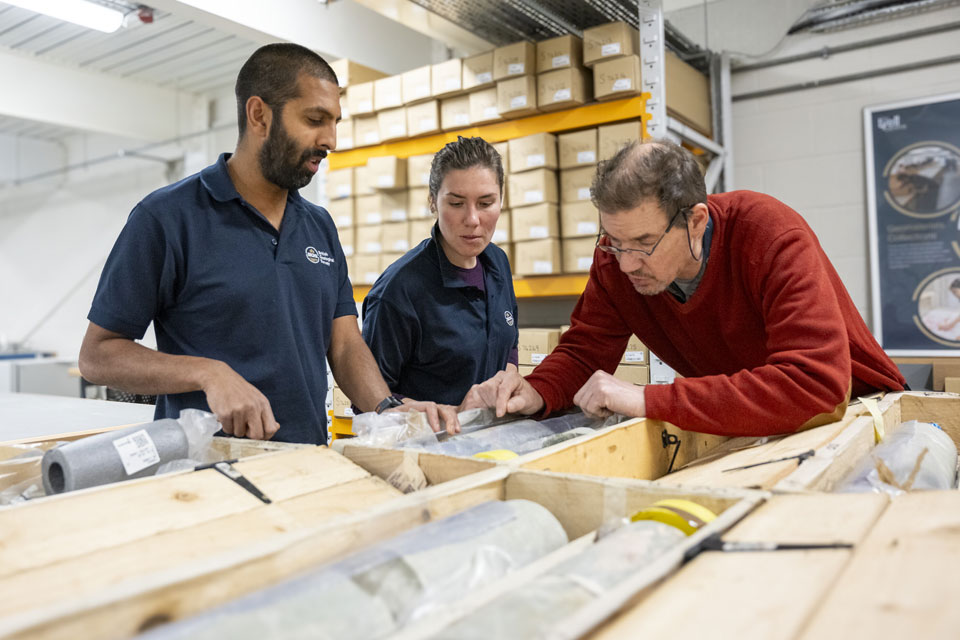
Scientists gain access to ‘once in a lifetime’ core from Great Glen Fault
01/12/2025
The geological core provides a cross-section through the UK’s largest fault zone, offering a rare insight into the formation of the Scottish Highlands.

New research shows artificial intelligence earthquake tools forecast aftershock risk in seconds
25/11/2025
Researchers from BGS and the universities of Edinburgh and Padua created the forecasting tools, which were trained on real earthquakes around the world.

BGS welcomes publication of the UK Critical Minerals Strategy
23/11/2025
A clear strategic vision for the UK is crucial to secure the country’s long-term critical mineral supply chains and drive forward the Government’s economic growth agenda.
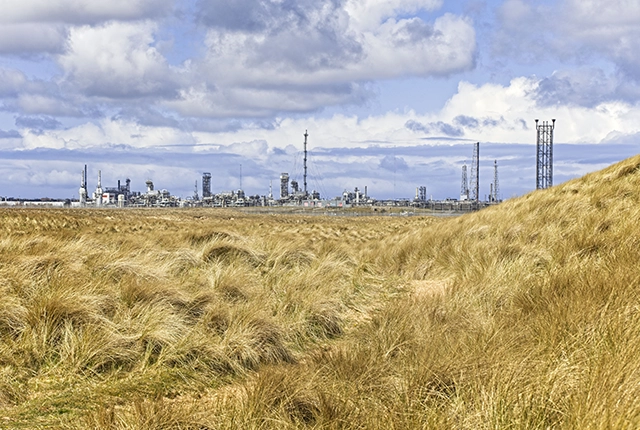
New funding awarded for UK geological storage research
21/11/2025
A project that aims to investigate the UK’s subsurface resource to support net zero has been awarded funding and is due to begin its research.
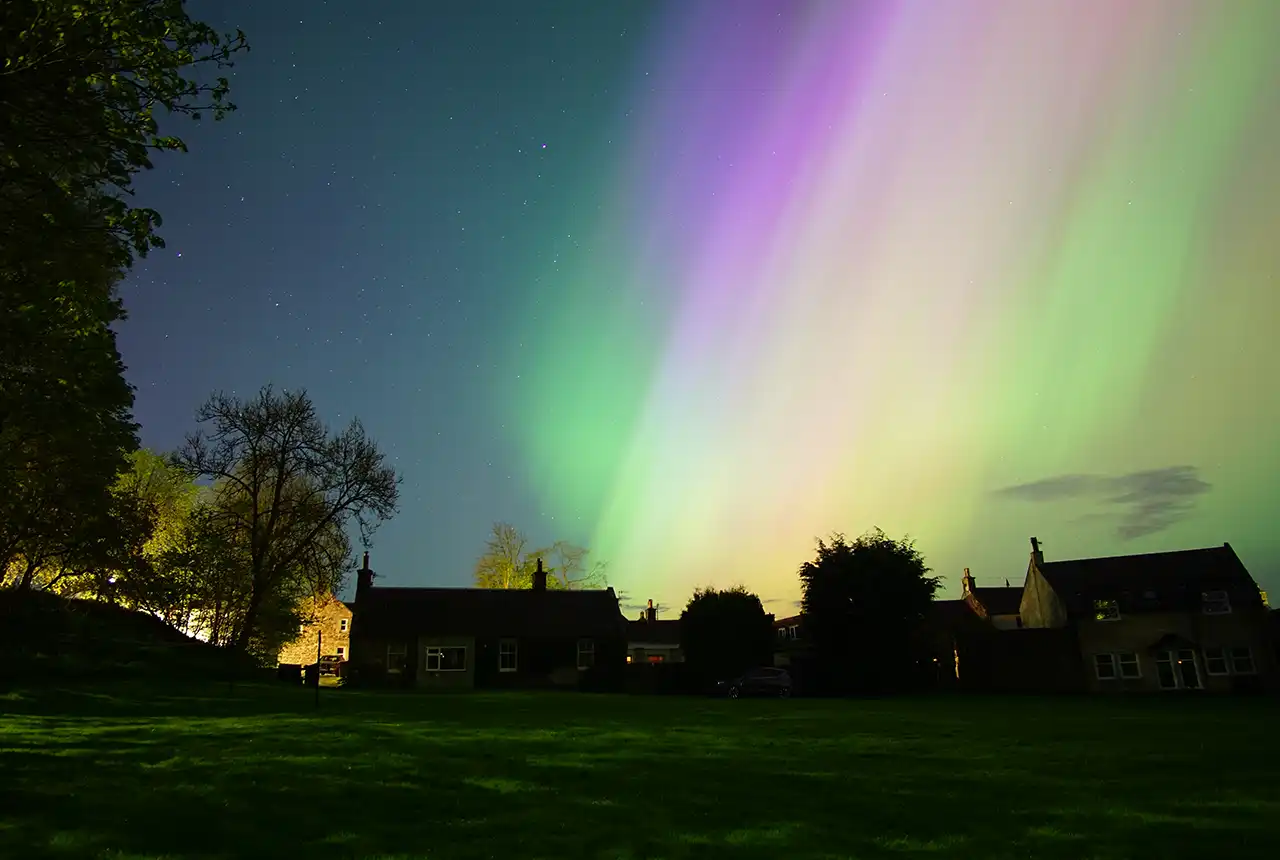
UK braced for what could be the largest solar storm in over two decades
12/11/2025
Intense geomagnetic activity could disrupt technology such as communication systems, global positioning systems and satellite orbits.
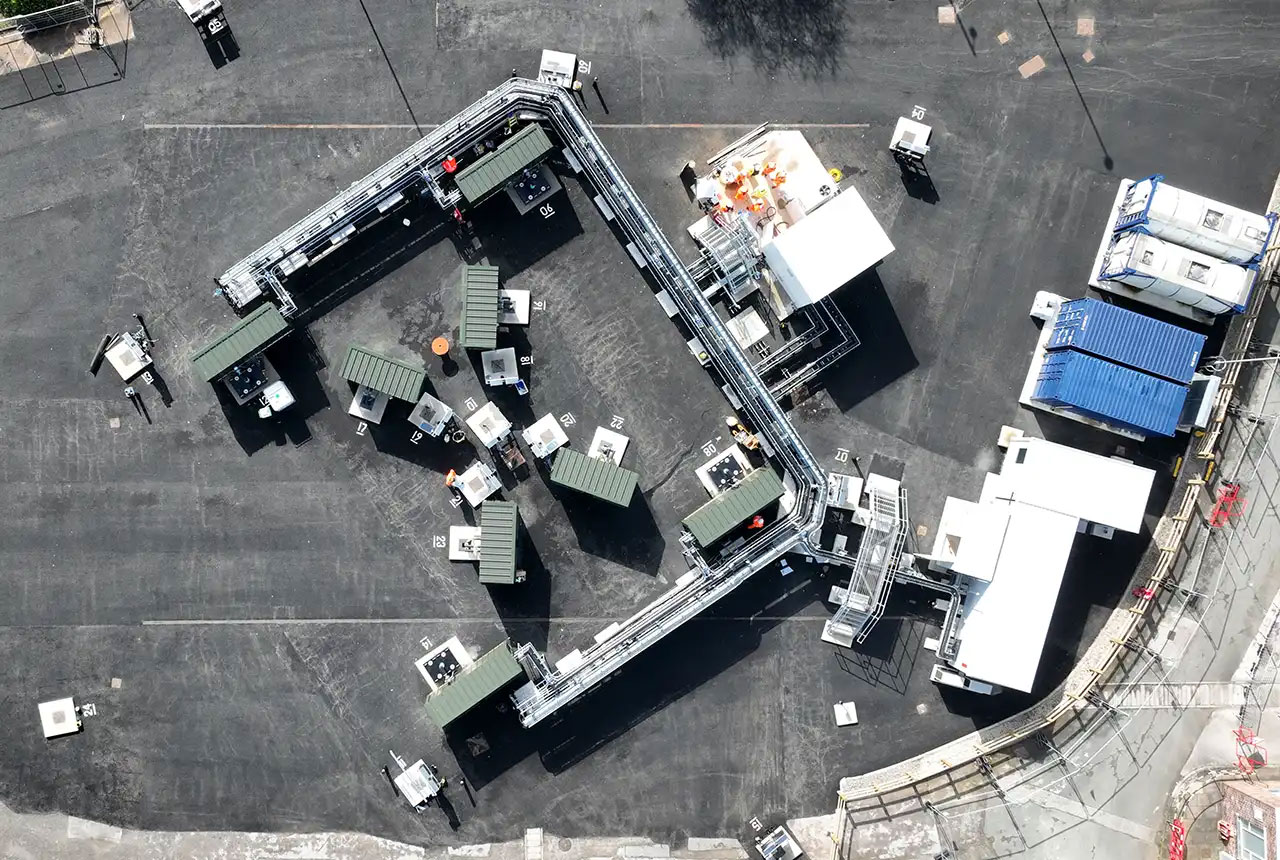
First distributed acoustic sensing survey completed at UK Geoenergy Observatory
12/11/2025
New research at the Cheshire Observatory has shown the potential for mapping thermal changes in the subsurface using sound waves.




